When you’re planting seeds, it’s critically important that you plant them at the right depth. Seeds that are planted too shallowly will have roots that are too close to the soil’s surface, which creates weak plants without good anchoring and exposes their roots to air and drying out (which equals death).
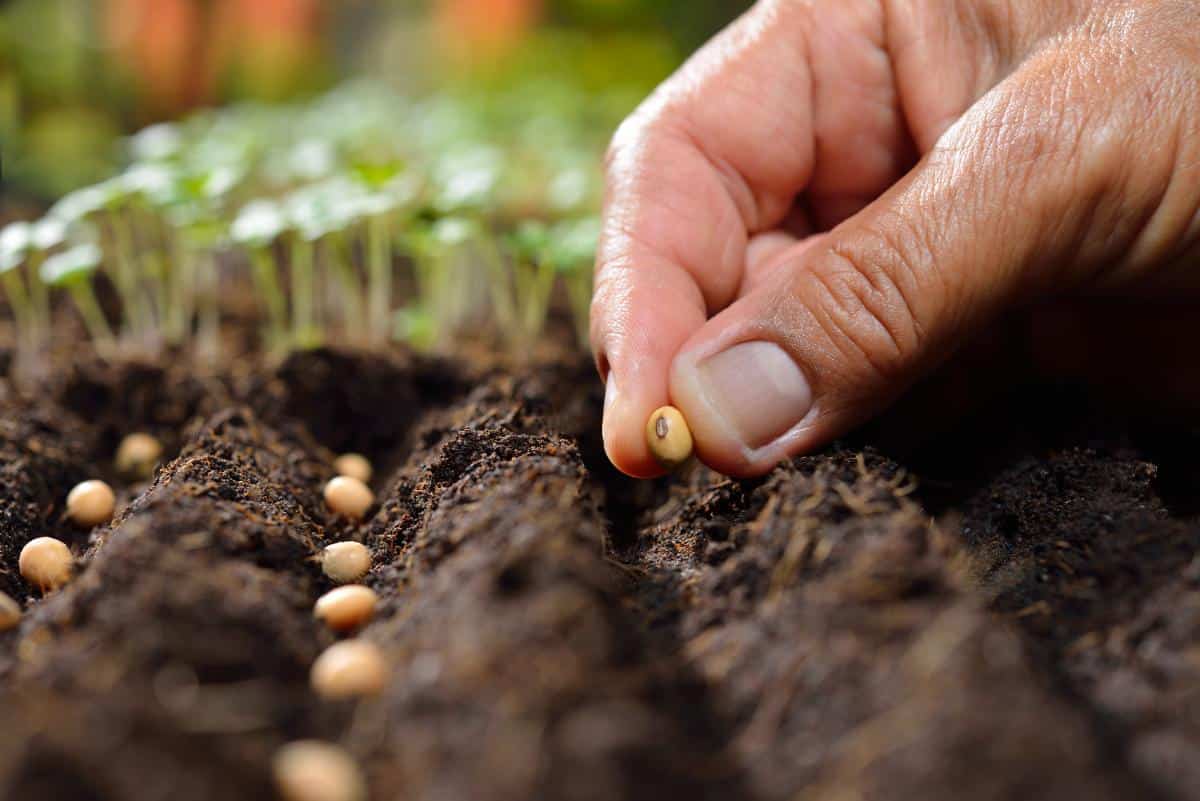
Seeds that are sown too deeply simply will not have the energy and size to push through a deep layer of dirt and soil, and though they may germinate, they will not live long enough to break the surface of the soil, and seedling death will occur.
Seeds that are sown too deeply may not germinate at all. They may either sit in the ground dormant, waiting for enough light and access to sprout, which they’ll never get unless you disturb the soil and bring them closer to the top (very difficult to do), or they may rot because they are exposed to moisture but never get the rest of the filtered light and temperatures they’d get if they were closer to the surface.
The bottom line is there is a right and a wrong depth to plant or sow your seeds. Planting them within that range is essential to growing anything from seed.
This is important for seeds that are sown indoors as well as outside. Here, we give you the information and a simple rule of thumb to follow for determining how deep to plant your seeds.
Jump to:
- Average Depth to Sow Seeds
- Where to Find Information for Seed Sowing Depth
- The Rule of Thumb for Seed Sowing Depth
- Seed Instructions Trump the Rule of Three
- How to Plant Seeds on the Surface and How to Plant Seeds that Need Light to Germinate
- Tips for Lightly Covering Shallow Seeds
- What's the Rule for Bulbs?
- What About Seeds Started Inside?
- All Seeds Need Seed-to-Soil Contact
Average Depth to Sow Seeds
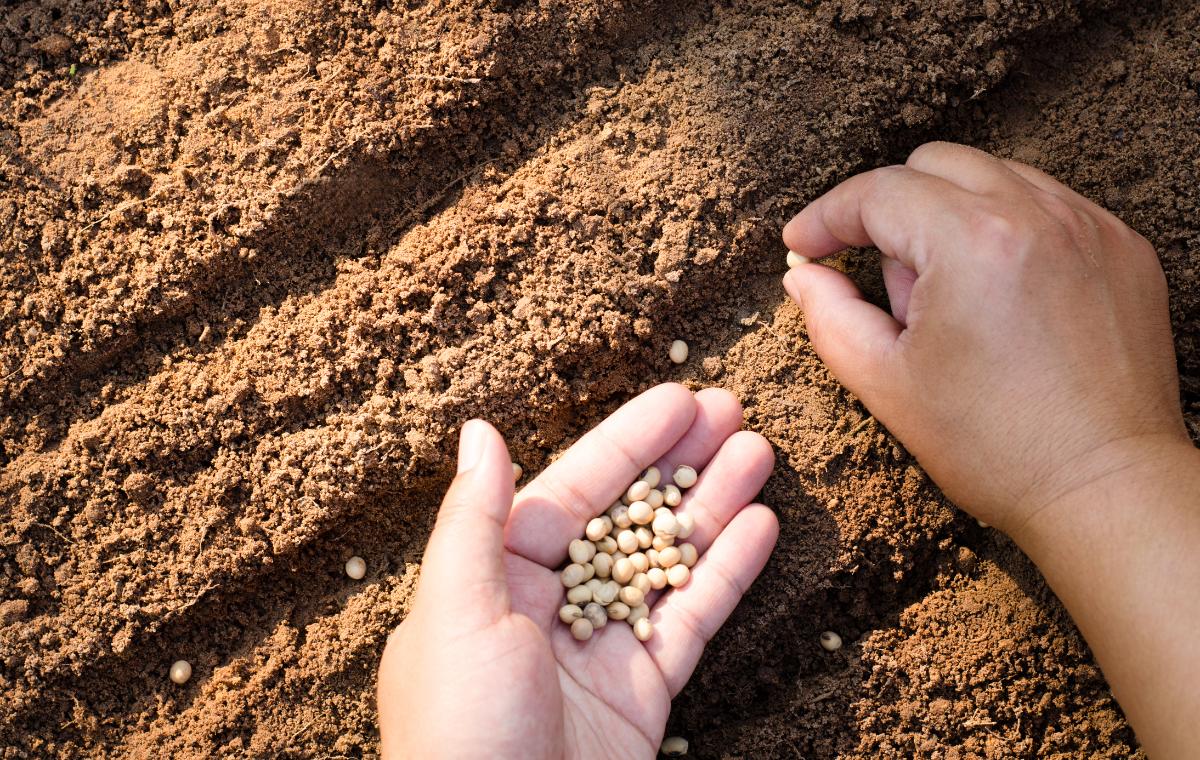
If you look at a sampling of seed packets, you’ll see that the average depth at which you should plant seeds is between ¼ and ½ inch deep. This holds true for most small seeds, but larger seeds like peas and beans will be even deeper – more like one to two inches deep.
Not to confuse things too much, but the time of year and planting conditions can change planting depth, too. If you have a range of planting depths listed (or researched), the lower, shallower range can be used when conditions are moist and the soil is light.
Conditions for shallower planting depths include:
- Early and spring plantings
- Fine soil
- Moist soils
- Soils with a lot of “residue” (large pieces of old, broken-down plants and organic materials)
Conditions for deeper planting depths are:
- Coarser, heavier soil
- Late plantings
- Planting for fall harvest, succession planting
- Planting in dry soil
Where to Find Information for Seed Sowing Depth
Though seed packets are notorious for not having all the information growers require, most seed companies are good about at least printing the right sowing depth and other relevant information, like frost hardiness and days to harvest.
Some companies do err on simplicity (and printing cost savings) on their packets, though, so if you have seeds that don’t provide this information directly on the packet, there are a few places you can look:
- In seed catalog descriptions
- On online seed company sites and online catalog descriptions
- Through a general online search for the type of seed that you’re planting – even if you can’t find the specific hybrid or named variety that you have, things like planting depth don’t tend to vary much between varieties of the same seed/plant type, so for planting depth, general results are typically fine to use
When you can’t find that information, follow the rule of three.
The Rule of Thumb for Seed Sowing Depth
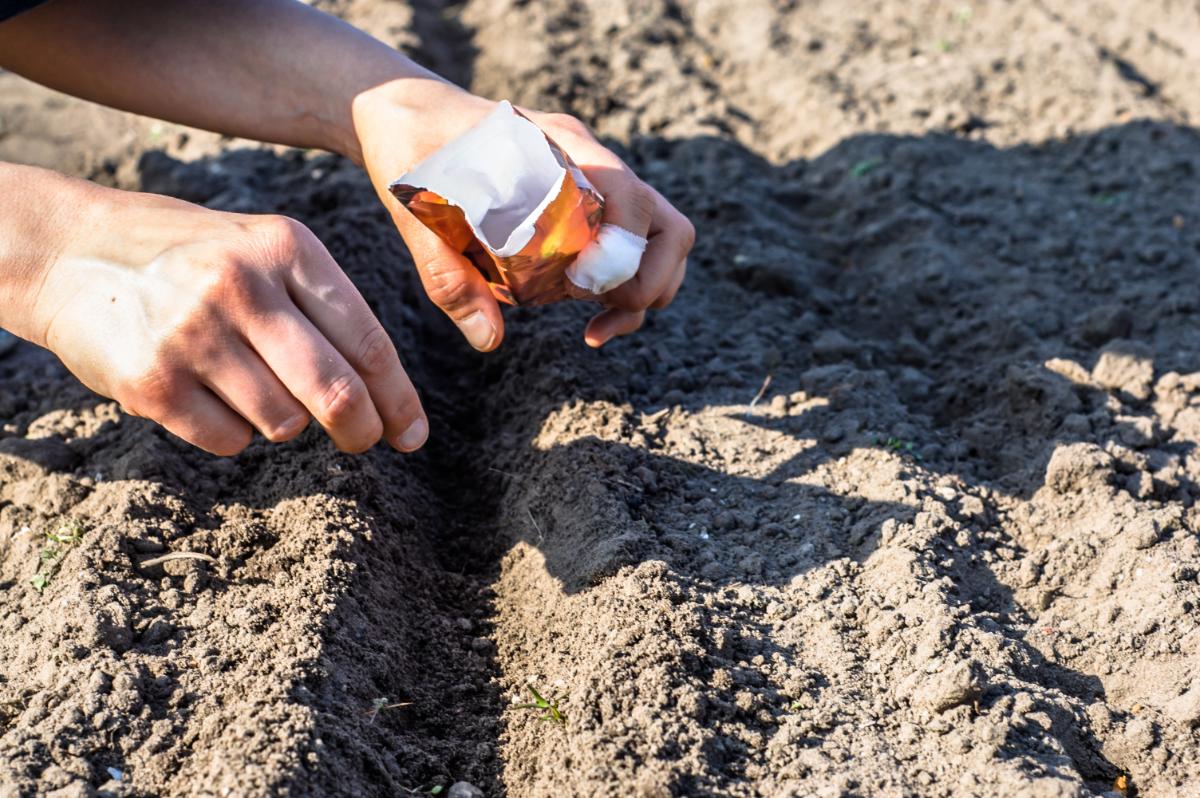
This is a good, basic rule of thumb to use when you need to find the right depth to plant a seed. Think of it as a “Rule of Three” (actually, it’s more like a rule of two or three).
Plant seeds at a depth of two to three times their size.
Planted at this depth, almost all seeds will have enough reserves to push up through the soil, where the plant will start reaching up into stem, leaves, and flowers or fruit, and the roots will penetrate down into the ground.
Seed Instructions Trump the Rule of Three
The rule of three times the depth is a good one to follow, and it works for most seeds most of the time. However, there are always exceptions to the rule. For seeds, the exception is usually seeds that need light to germinate and/or that should be only sown on the surface of the soil.
Different seeds have their own unique needs, so the information that is given on a specific seed’s packet or in a seed catalog or online description from the company that produced or sold the seed is what should be followed if there is any question.
Use the seed company and packet information first, but if you don’t have that information, follow the rule of three, and you will be successful with almost all your seeds.
How to Plant Seeds on the Surface and How to Plant Seeds that Need Light to Germinate

Some seeds need light to germinate.
Many flower seeds need light to germinate, including ageratum, wax begonia, snapdragons, and Lisianthus (among others). Lavender benefits from a very light covering with some access to light.
Several herbs and vegetables like light to germinate, too, or a very fine covering with filtered light exposure. Dill and lettuce, for example, need light to germinate.
Celery and onions need a light covering of soil with filtered light exposure.
Here’s how to plant seeds that need light to germinate:
- Moisten the seed starting soil
- Fill the germination pot or cell pack about 80% full
- Smooth the top of the soil
- Sprinkle seeds evenly over the top of the surface (if potting up later – if planting in cell packs, plant 2 to 3 seeds per cell and thin later on)
- Light press the seeds into the soil’s surface
- Do not cover
- Mist the top with a mist of water
- You can cover the container with plastic wrap or place it in a clear domed planting tray to maintain moisture while seeds germinate
Tips for Lightly Covering Shallow Seeds
It can be difficult to plant small seeds that only need a thin covering without accidentally planting them too deeply. Here are some tips that can help:
- Use a skewer, stick, seed dibber, or Hori Hori knife and lightly cut a shallow line in the soil
- Sprinkle seeds according to package directions for spacing
- Use a brush (like a paintbrush) to just lightly cover the soil over the line of seeds
- Tamp the soil down lightly
- Water as needed
- For seeds started indoors and in containers, you can cover with a thin, even layer of vermiculite instead of covering with soil, which will help hold more moisture
- It can be difficult to keep seeds moist that only have a light covering
- For seeds started indoors, cover with plastic wrap or an upside-down seed tray, a sheet of cardboard, or a humidity dome (depending on light/dark requirements for germination)
- For small seeds outside, like carrots, a layer of light mulch or a board or sheet of cardboard placed over the row helps to hold in moisture so the seeds don’t dry out. When seeds dry out after being moistened, they tend not to germinate well.
- Check daily and remove coverings as soon as seeds sprout and break the soil’s surface
- You may need to water daily because the top of the soil will dry out first, and it can be difficult to maintain moisture close to the seeds, even if the ground or bottom of the pot is moist
What's the Rule for Bulbs?
The same rule works well for bulbs. Plant them to a depth of about three times the height of the bulb. For this purpose, you can think of bulbs as being like a big seed.
What About Seeds Started Inside?
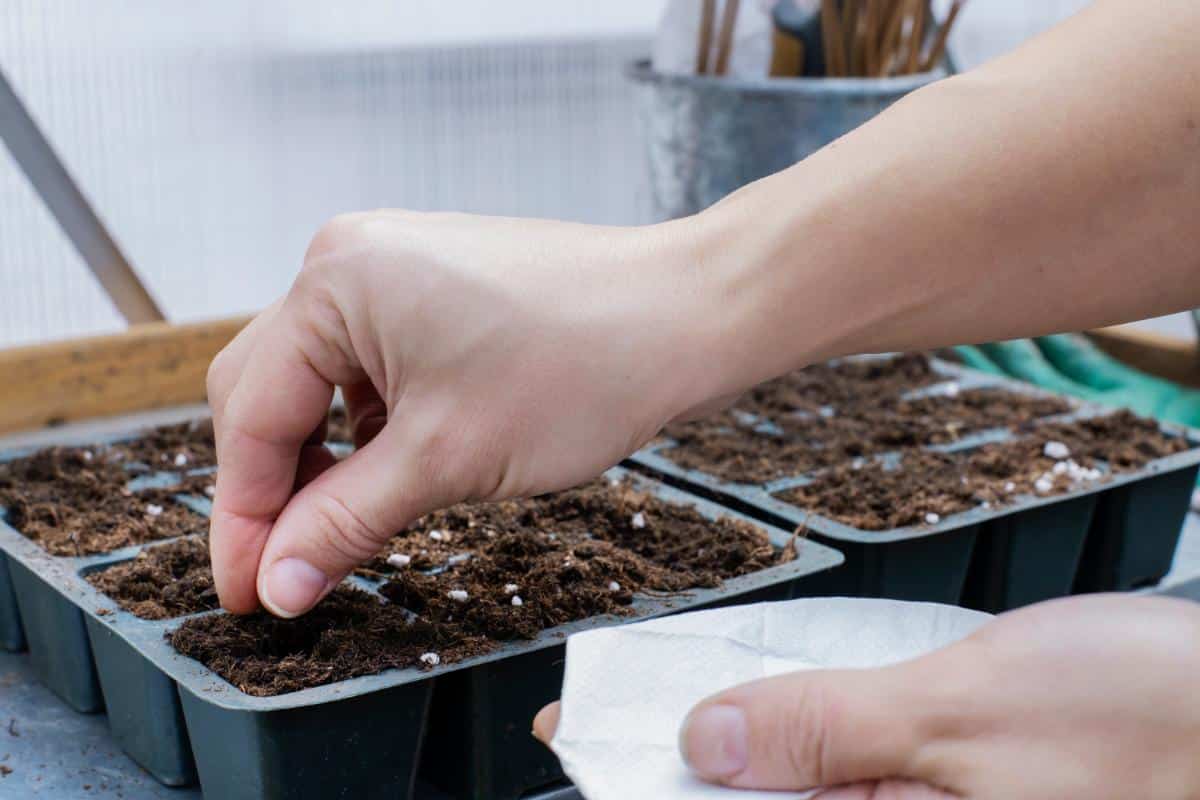
If you’re starting your seeds indoors to grow transplants for the garden, the rule remains the same. It’s more about how much soil the seed can push through while still maintaining good seed-to-soil contact, access to moisture, and the ability to send roots down. It doesn’t matter as much whether you are directly sowing those seeds in the ground or if the seeds are being sown into cell packs.
That said, if you are starting your seeds in intensive seed germination pots or plug trays and then potting them up after, you have a little more leeway. Because the seedlings will be potted up, you’ll be able to sink the seedlings into the soil further to make corrections later (after they have two true sets of leaves). So, these seeds can take shallow sowing—but not deep sowing!
You still don’t want to sow seeds too shallowly—they do need that seed-to-soil contact, and they can’t be planted too deeply when they’re potted up so that you’d be burying too much stem and causing rot issues.
Note that some seedlings and transplants can do well if portions of the stems are buried because they will grow even more roots from the buried parts of the stem, making them stronger and more stable. Broccoli and tomatoes are two examples.
If you want to get it down to basics, though, the rule is this – sow seeds that you’re starting indoors to the same depth that you would sow them outdoors; whatever the seed packet lists or whatever you determine to be the right depth according to the “rule of three.”
All Seeds Need Seed-to-Soil Contact
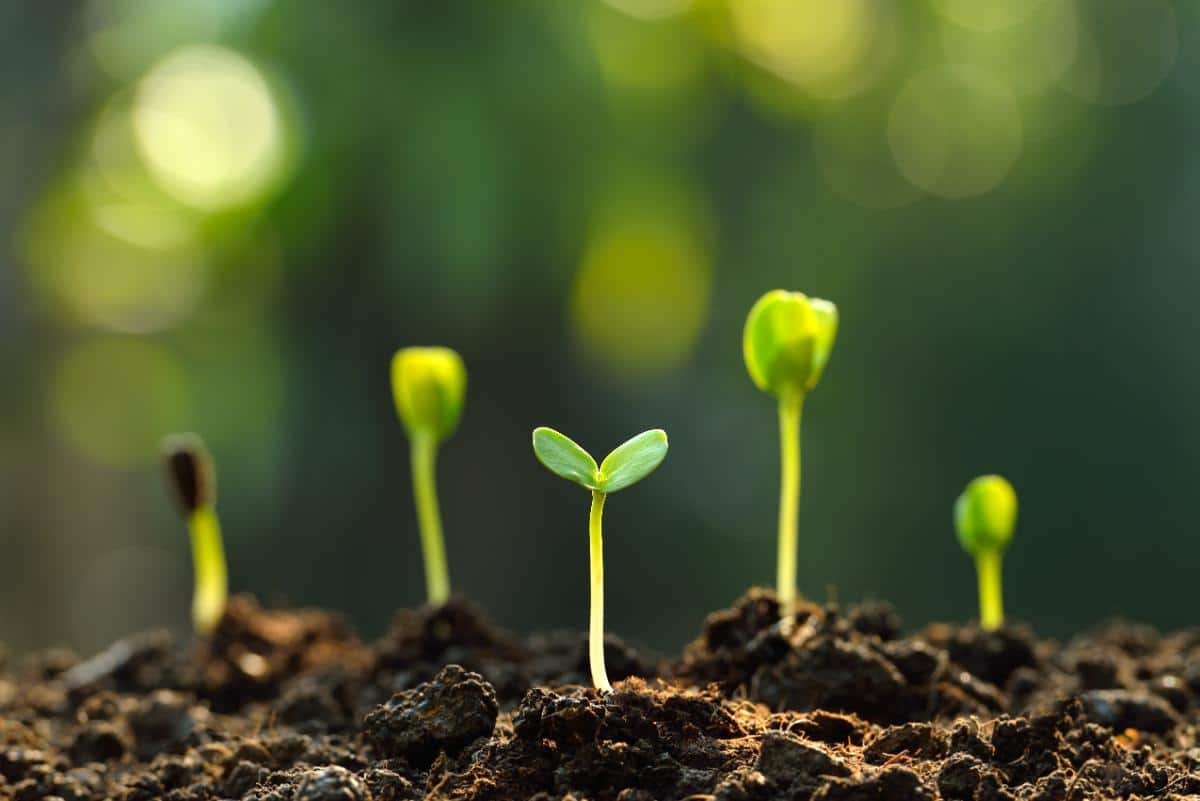
It’s worth keeping in mind that no matter what the correct depth is for sowing a certain type of seed, all seeds need seed-to-soil contact to be successful and grow strongly.
If seeds do not contact the soil, they often won’t germinate, but they also will not have enough access to moisture for swelling, sprouting (germinating), and growing. If seeds sit above the surface of the soil, they will sometimes sprout if they somehow get enough moisture, but eventually, the roots will shrivel and die because there is not enough protection or moisture for them to access and stay hydrated.
When seeds have poor contact with the soil, they may sprout, but the germination rate will be much lower, and the percentage of seeds and seedlings that survive to grow into mature plants can be as bad as 50% or less.
This is why it’s important to determine the right depth at which to sow your seeds and also to press even surface-sown seeds into the soil to establish contact and give them access to moisture and protection from drying out.

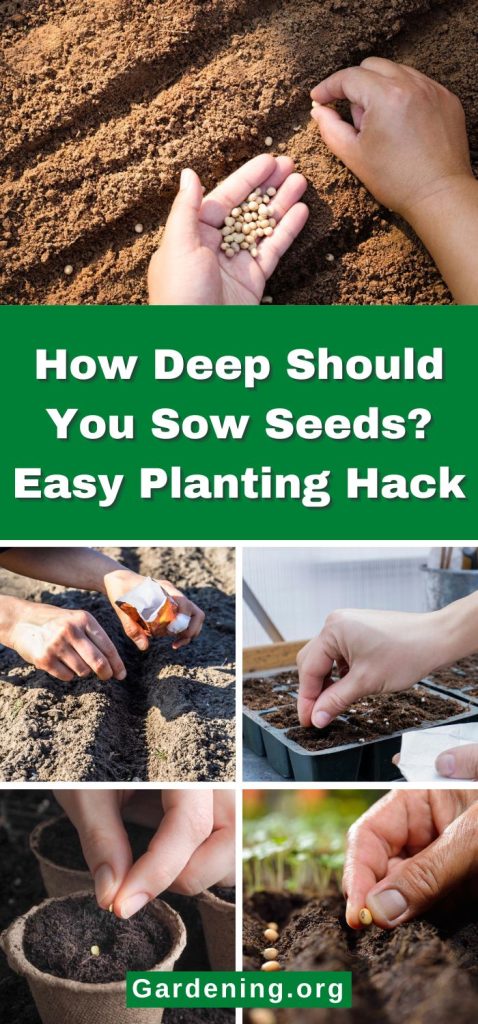
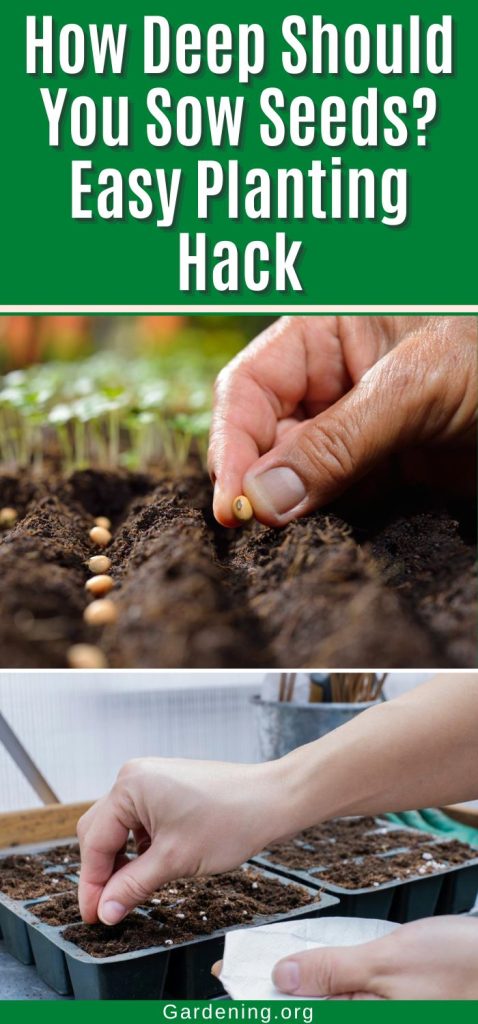

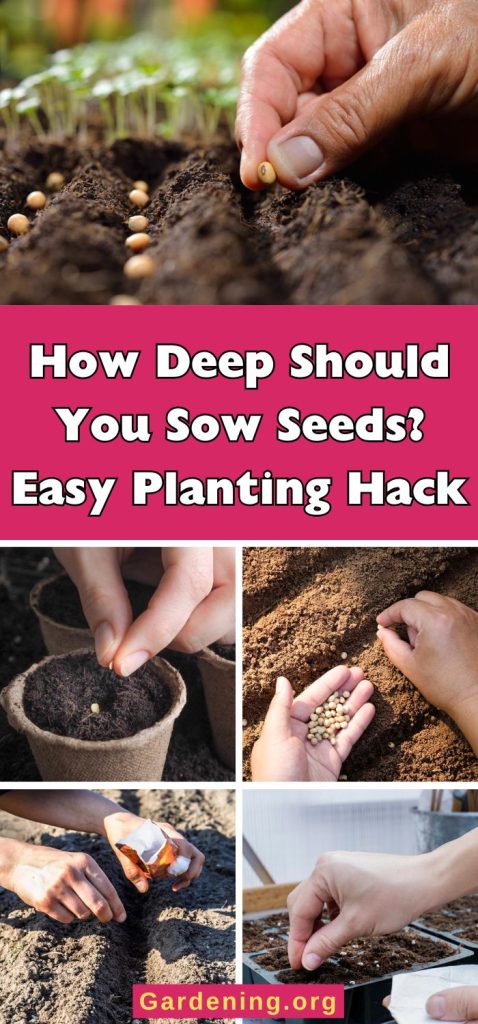

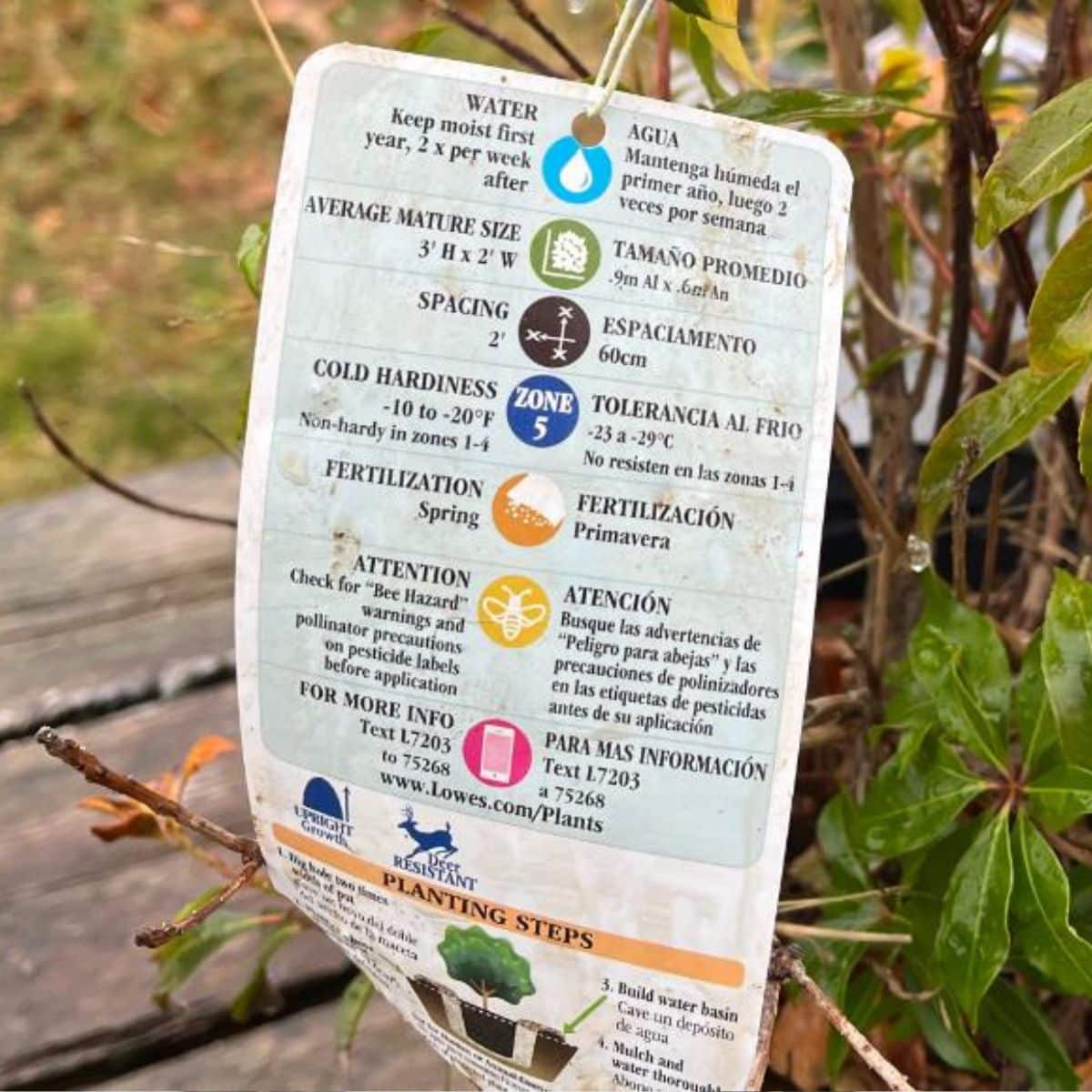
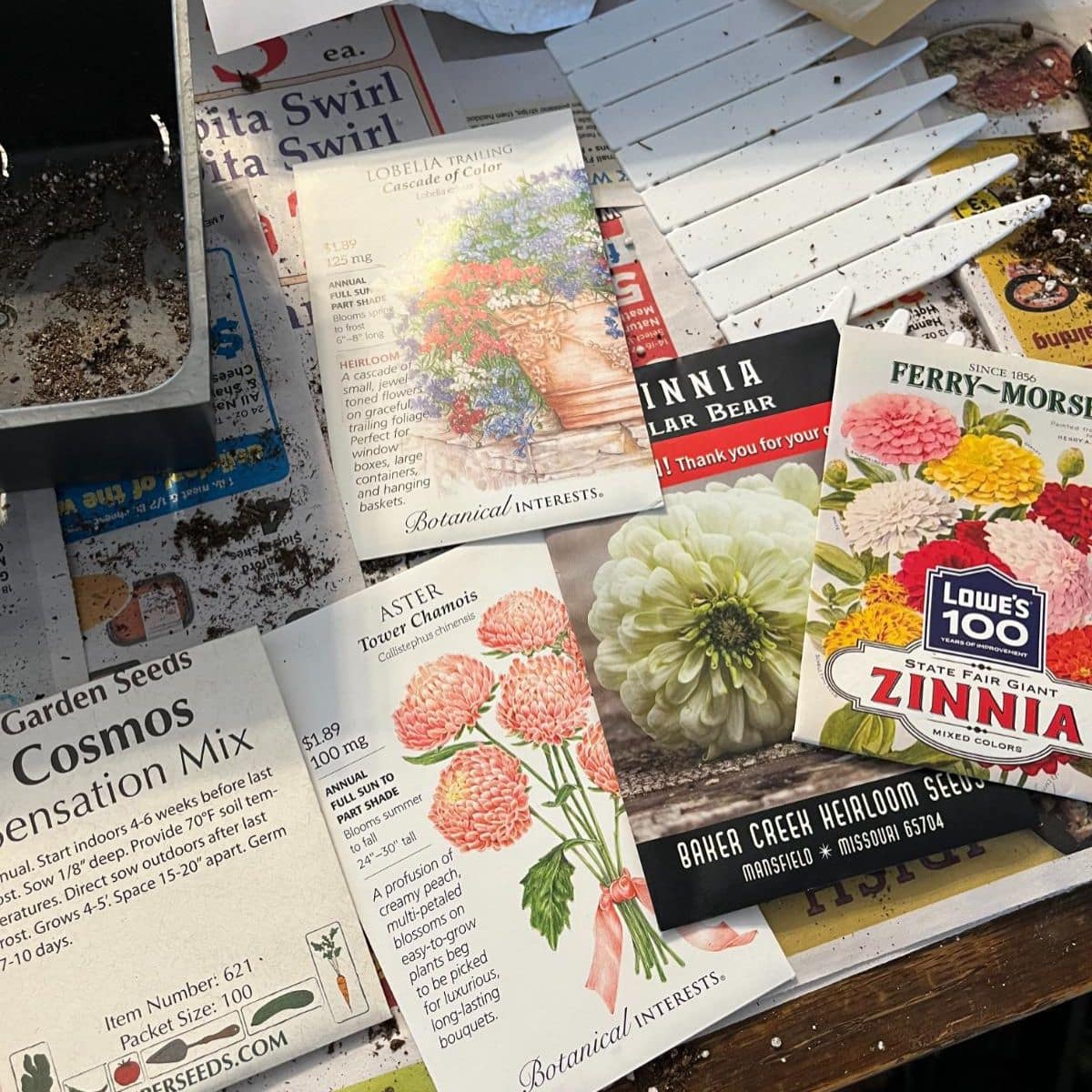
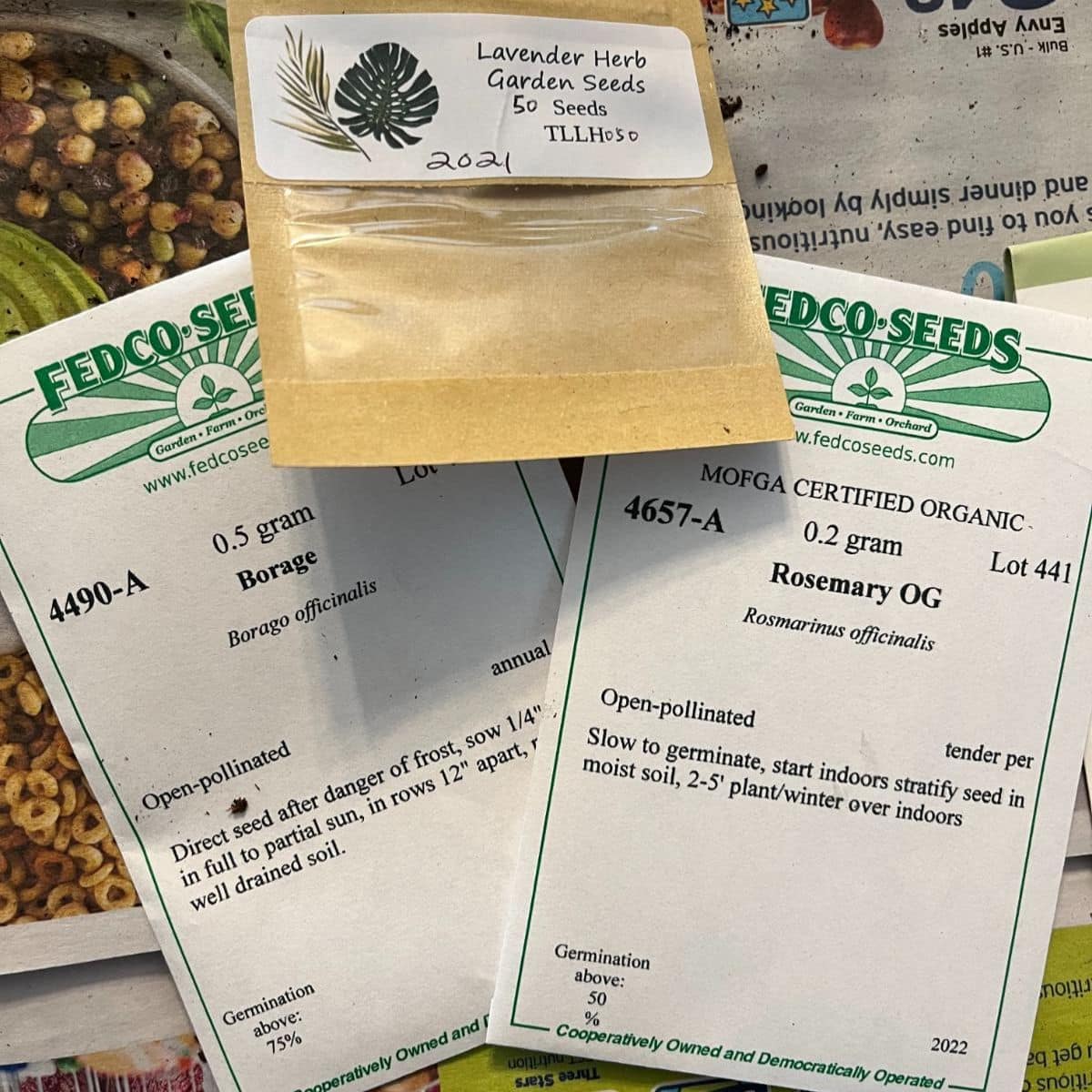
Gabe De Liso
Great info. Will certainly follow